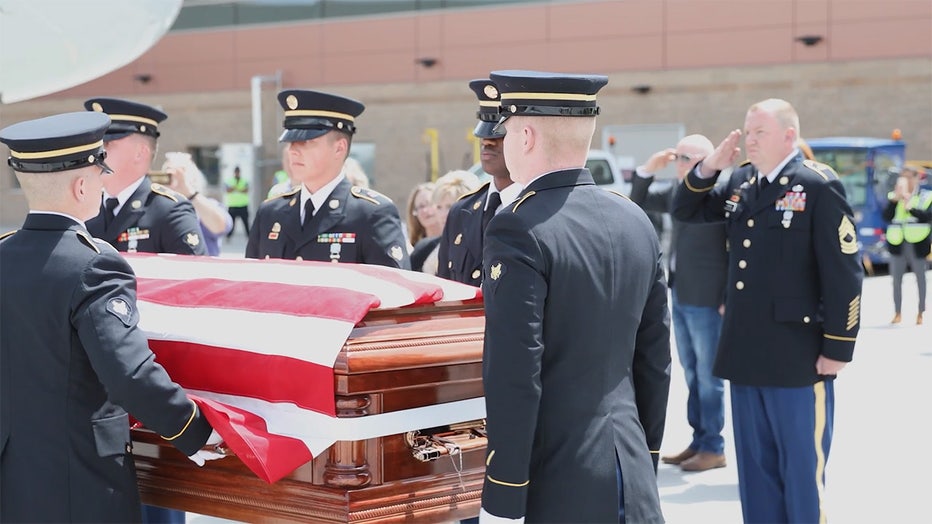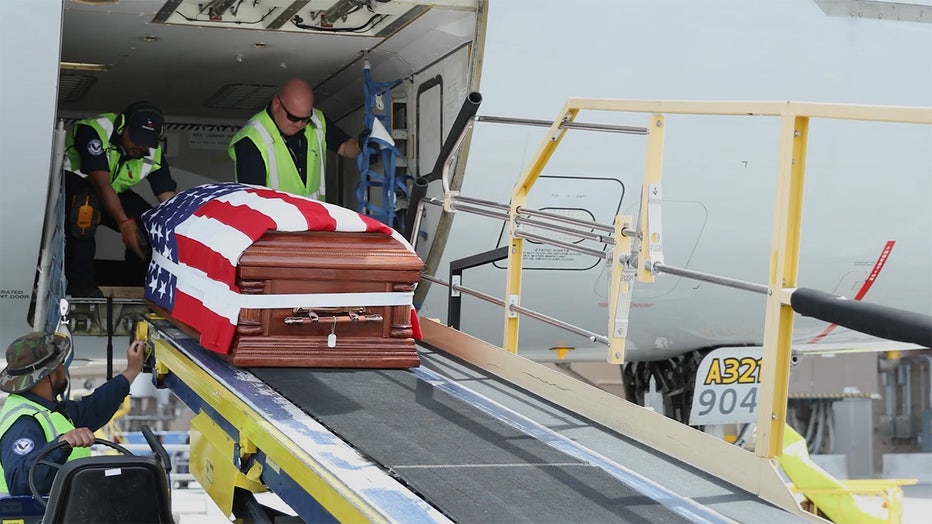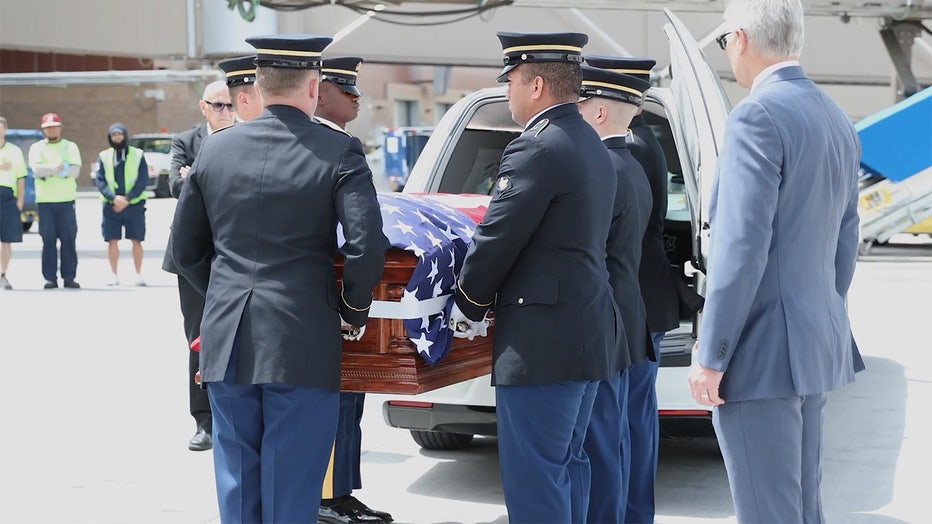Remains of Korean War veteran finally come home after being MIA for 71 years
MIA for 71 years, Cpl. David B. Milano returns to American soil
Corporal David B. Milano, MIA, was lost in action during the Korean War on December 2, 1950. After 71 years, he will be repatriated back to the United States and reunited with his family. (Credit: Staff Sgt. Jordan Hack via Utah National Guard Public Affairs)
A Korean War veteran who went missing in action 71 years ago is finally coming back home to his final resting place.
The remains of Cpl. David B. Milano were brought back to the United States by members of the Utah National Guard and arrived at the Salt Lake City International Airport on April 26.
“Corporal Milano’s remains were returned to the United States as a result of a repatriation agreement between the U.S. and Korean governments,” according to his obituary.

Freeze frame of National Guard members receiving the remains of Cpl. David B. Milano on April 26, 2022. (Staff Sgt. Jordan Hack via Utah National Guard Public Affairs)
Milano went MIA during a battle in the vicinity of the Chosin Reservoir in North Korea on Dec. 2, 1950. He was ranked Private First Class when he went missing but was promoted to the grade of Corporal on May 1, 1953.
All of Milano’s remains were accounted for on April 14, 2020, and they were turned over to American service members to be returned home.

Freeze frame of remains of Cpl. David B. Milano arriving to Salt Lake City International Airport on April 26, 2022. (Staff Sgt. Jordan Hack via Utah National Guard Public Affairs)
Milano was born in Chicago, Illinois, on Dec. 23, 1932, to Albert and Linda Milano, according to his obituary.
He enlisted in the United States Army on March 13, 1950, and was originally assigned to be deployed to Germany but was reassigned to serve in Korea.
“As a patriot and defender of freedom, he chose to accept his assignment to Korea,” his obituary read.

Freeze frame of National Guard members receiving the remains of Cpl. David B. Milano on April 26, 2022. (Staff Sgt. Jordan Hack via Utah National Guard Public Affairs)
“We’re finally getting closure,” Milano’s nephew Kevin Jordan told FOX 13 News.
“It’s a miracle, it’s unreal what we’ve all experienced,” Jordan added. “When we first got the news, it set in. And now, with the plane landing and the coffin coming off the plane, for me, that’s when it really hit me hard. I felt it. I felt it in my heart and in my soul. We were united again.”
This story was reported out of Los Angeles.




